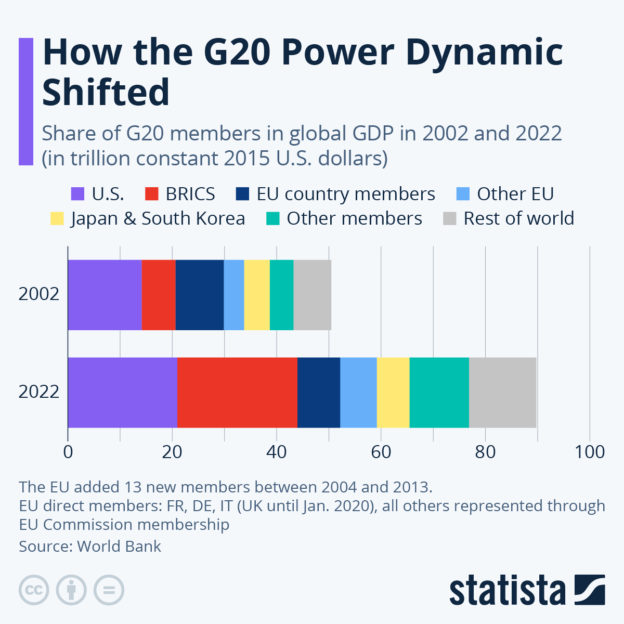The G20, which is meeting this weekend in New Delhi, India, was founded in 1999 and has over the course of the past two decades seen a major shift in its power dynamic. In 2002, the United States had by far the biggest economic clout in the group with a share of around a third of the its GDP – more than double that of the BRICS bloc, which assembled in its current form between 2009 and 2010 but previously saw all its members join the G20 inaugural line-up.
In 2022, the BRICS bloc has a slightly higher combined GDP – even in nominal terms – than the U.S., at 30 percent and 27 percent of inflation-adjusted G20 GDP, respectively. EU countries Germany, France and Italy are direct G20 members and together accounted for another 10.7 percent. When counting all EU members, this rises to around 20 percent. However, remaining EU members are only represented by two high-level delegates in the G20, the presidents of the European Commission and the European Council.
Like for the U.S., the EU direct members’ share in the group’s economic output decreased. This happened due to the absence of the UK (listed under other members in 2022), but also independent of that factor opposite the growing economies of the Global South. Meanwhile, the other EU members’ cut remained stable. This happened only through the admission of 13 new EU countries between 2004 and 2013, however.
After adjusting for inflation, the global economy grew from $50 trillion in 2002 to almost $90 trillion in 2022. The share of G20 stood at around 85 percent of global GDP in both years.
https://www.statista.com/chart/30759/share-of-g20-members-in-global-gdp/





